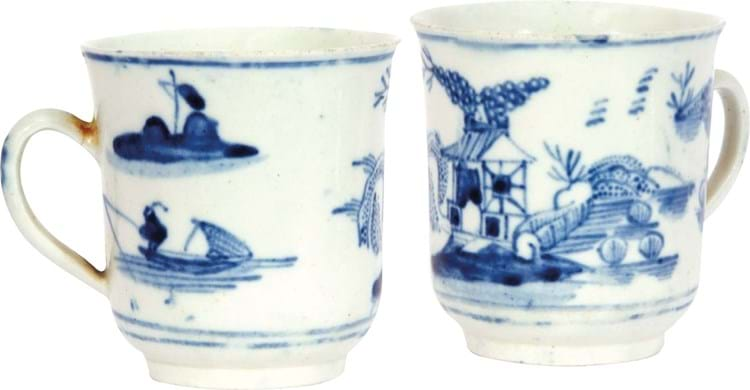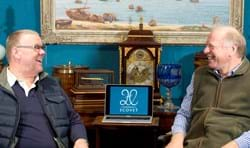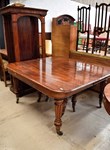As the price suggested, this was something special.
By the mid 1750s the Worcester factory, based at Warmstry House on the banks of the Severn, was making the best English blue and white tea wares that money could buy. However, the first two or three years of production from 1751 had been a learning curve with the earliest wares often found with poorly controlled cobalt decoration.
This simple thrown and turned cup is painted in underglaze-blue with a chinoiserie scene known to collectors as the ‘Union Jack House’ pattern. The name reflects the curious criss-cross rendering of a cottage that, in a misreading of Chinese decoration, has prunus blossom apparently growing from its chimney.
Bristol origins
The pattern was produced at Benjamin Lund’s factory in Bristol c.1750 (a coffee cup was sold by Bonhams in 2004 for £8500) and it probably travelled up the Severn in early 1752 when the Bristol concern was sold to Dr John Wall and the other 13 shareholders in the Worcester Tonquin Manufactory.
Only a handful of pieces of this early Worcester class are known. However, they include a cup with the same loop handle from the Watney collection sold for £2400 by Bonhams in 2000 and another with a scroll handle and the inscription TB 1753 to the base discussed in Aileen Dawson’s The Art of Worcester Porcelain: Masterpieces of the British Museum Collection (2007).
Part of the BM collection since 1926, it has long been deemed ‘the earliest known dated piece of Worcester blue and white’ but recently, in The Origins of Worcester Porcelain (2018), Ray Jones has suggested the numbers are not a date at all but two adjacent inscriptions by different hands relating to trial firings.
If true, it is tempting to suggest these ‘union jack’ cups, with their naive decoration and pitted glaze, are from the very first days of production at Worcester. When Bonhams Knightsbridge offered a similar cup for sale in June 2019 (sold at £6000), it was catalogued as c.1751-53.
Keys’ cup, with a crack to the handle, came for sale from a local source (specialist David Broom had first seen it a year ago and had finally persuaded the owner to part with it). The winning bidder, at a price that with 20% buyer’s premium was just shy of £5000, was an overseas collector.















